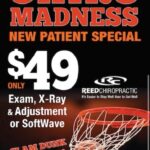SoftWave Therapy Frequently Asked Questions
What is SoftWave Therapy?
SoftWave Therapy is a new cutting-edge device within the Extracorporeal shockwave therapy class (ESWT).
How is SoftWave,trt different than other ESWT devices?
SoftWave Regenerative Technology uses electrohydraulic shock waves that stimulate and activate your resident stem cells without any tissue damage. Other devices on the market cause micro trauma to get a response.
How does SoftWave work?
SoftWave tissue regeneration works in 3 phases:
- An electrode in water is sparked to produce a burst of high voltage is sent to the tip of the electrode or applicator like a bolt of lightning. The spart turns water into vapor releasing an acoustic shock wave that is sent out of the applicator head.
- The shock wave come out in two forms.
- First, a gentle wave that spreads out like a ripple on a pond.
- Second, a focused wave goes out at a specific point.
- The SoftWaves come in contact with your cells, specifically your mechanoreceptors. Activation of these cells cause them to release stem cells, reduce pain receptors, and other molecules to help the tissues heal and regenerate.
The SoftWave (ESWT) device is able to trick your body into thinking that it has been injured without cause trauma. The gentle waves cause the walls of the cells in that area to become permeable allowing proteins to pass through. These proteins are called exosomes and mimic a new cellular injury. You body is tricked into starting a biological cascade of healing processes. This includes stimulating and generating stem cells in the area treated.
What are the Benefits of SoftWave Therapy?
SoftWave has the ability to treat both acute and chronic pain. The technology interacts with the chronic and acute tissues at the cellular level deep into the tissues. This helps stimulate the body’s natural healing process at the source.
The Benefits include:
- Increased blood supply through re-capillarization
- Decreased inflammation
- Stimulation of resident stem cells
- Repair and regeneration of damaged tissues
- Acceleration of wound healing
- Antimicrobial properties
- Reduction of acute and chronic pain
What Conditions can SoftWave Treat?
Here is a list of the most common conditions that we have treated successfully at Reed Chiropractic using SoftWave:
- Knee Pain due to OA
- Plantar Fasciitis
- Shoulder Pain
- Elbow pain (Tennis and Golfers elbow)
- Carpal Tunnel Syndrome and Wrist Pain
- Muscle Strains
- Lower Back Pain (general facet pain)
- Sciatica and Radicular pains
- Neuropathy
Note: This is not a complete list, and we cannot guarantee a cure for any condition. We simply evaluate each patient and provide the best care we can using SoftWave to stimulate their body’s own natural healing response.
What are the risks of SoftWave?
SoftWave Therapy is FDA approved and is considered to be non-invasive and safe. ShockWave in the general form have been studied and used for over 50 years. The SoftWave,trt device specifically has been being used and studied for the past 20 years. Some of the most common side effects that people might experience are:
- Redness
- Fatigue for 24-48 hours
- Mild Swelling
- Brusing
How Long does SoftWave Therapy Take?
SoftWave Therapy treatments typically take about 10-15 minutes. A gel is applied to the skin over the treatment area. The applicator is then applied to the area and the shockwave are applied. The unfocused sound waves penetrate deep into the area and the patient will feel a pulsing sensation over any damaged tissue. The typical results immediately after treatment is increased mobility and a reduction of pain in the area.
Who is not a candidate for SoftWave Therapy?
SoftWave Therapy is not indicated in patients who are pregnant, have a pacemaker, or have cancer. Softwave is also not indicated in children over any area with open growth plate.s Before your first visit one of our providers with go over your medical history and determine if you are a candidate for SoftWave therapy.
Does SoftWave Hurt?
When the acoustic shockwaves hit the damaged or inflamed tissues you will feel it for sure. However, most patients say that the feeling is more of a hurt so good felling. The best way to describe it is that if you are getting a shoulder massage and a tender spot is rubbed it is sore, but it feels good to keep rubbing it. The therapeutic range of pain is a 5-6 out 10 on a 1-10 pain scale. The provider will constantly check in with you to made sure the treatment is comfortable. In my opinion, the SoftWave machine is the most comfortable machine in the ESWT class. Some other shockwave machines use a pneumatic hammer that pounds on the tissue which can cause bruising, and others use pisioelectric shockwaves which feel like a bad tooth ache, or like you are getting shocked. The SoftWave unit uses soft waves in a pulsing manner which is very comfortable, and patients generally look forward to their treatments.
How Many Treatments will I Need?
Every patient and condition is different, but on average most patients need 6-8 treatments to get the maximum benefit. In most cases within minutes of your first treatment stem cells are stimulated, range of motion is improved, and pain is modulated. Typically, after the third treatment we hope to see a 60-75% reduction in your pain. And after 5-6 treatments we will have the maximum stem cell production which will continue to migrate and repair the tissue over the next 8-12 weeks. Electrohydraulic shockwaves have proven to have a 300% increase in small, medium, and large blood vessels within 12 weeks following the first treatment. Your true innate healing powers will be reached after 8-12 weeks when the maximum amount of stem cells have been produced and migrated to the treated area.
Post Treatment Instructions?
Most patients feel great after their SoftWave treatment sessions. However, there are a few guidelines to be followed.
- SoftWave is stimulating your bodys natural healing response, so you want to avoid taking any anti-inflammatory medications (NSAIDS-Asprin, Advil, Motrin, Aleve, and Naprosyn). These medications will slow or hinder your body’s ability to heal making your treatment less effective.
- If you have pain and need to take something Tylenol would be a better option. (Please check with your doctor before taking any medication you have not taken before).
- Avoid using Ice on the treatment area as this again will slow your healing process down. Try moist heat if necessary.
- Stay hydrated to promote healing and help with the flushing out of inflammation and damaged tissue cells.




